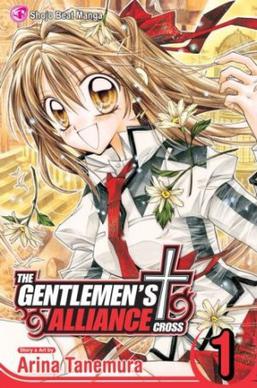Related Research Articles
Glorfindel is a fictional character in J. R. R. Tolkien's Middle-earth legendarium. He is a member of the Noldor, one of the three groups of the Calaquendi or High Elves. The character and his name, which means "blond" or "golden-haired", were among the first created for what would become part of his Middle-earth legendarium in 1916–17, beginning with the initial draft of The Fall of Gondolin. His name indicates his hair as a mark of his distinction, as the Noldor were generally dark-haired. A character of the same name appears in the first book of The Lord of the Rings, The Fellowship of the Ring, which takes place in Middle-earth's Third Age. Within the story, he is depicted as a powerful Elf-lord who could withstand the Nazgûl, wraith-like servants of Sauron, and holds his own against some of them single-handedly. Glorfindel and a version of the story of the Fall of Gondolin appear in The Silmarillion, posthumously published in 1977.

The Secret Files of the Spy Dogs is an American children's animated series, produced by Saban Entertainment, that aired on Fox Kids from 1998 to 1999.

"The Nine Peahens and the Golden Apples" is a work of Serbian epic poetry. It is classified as Aarne-Thompson type 400*, "The Swan Maiden", and ATU 400, "The Quest for the Lost Wife".

Kamen Rider Hibiki & The Seven Senki is the movie for the Japanese tokusatsu production Kamen Rider Hibiki, directed by Taro Sakamoto and written by Toshiki Inoue. The movie's title and plot is a reference to the classic Akira Kurosawa film, the Seven Samurai. This movie marks the debut of Kamen Rider Hibiki's final form prior to its appearance in the show, and also explains the history of the Makamou and Oni war.

Devil May Cry is a series of video games set in the present, created by Hideki Kamiya, a video-game designer and developed by his employer Capcom and Clover Studio. The series' success has led to comic books, novelizations, two anime series, guides, collectibles and a variety of action figures. The first game focuses on devil hunter Dante's mission to avenge the death of his mother, Eva, by exterminating demons. In the process he encounters his long-lost twin brother, Vergil, with whom he has a dysfunctional relationship. As the story progresses, Dante encounter his father's nemesis, a demon emperor, Mundus, who is found to be responsible for the murder of Dante's mother.
Sonic Soldier Borgman, or simply Borgman, is a futuristic science fiction hero anime television series produced by Nippon TV, Yomiko Advertising, Toho and Ashi Productions. It was directed by Hiroshi Negishi, with Hideki Sonoda handling series scripts, Kia Asamiya designing the characters and Hiromoto Tobisawa composing the music. The TV series aired on Nippon TV and its affiliate stations on Wednesday evenings from April 13 to December 21, 1988, and was followed up by a video game, two movies, and an OVA miniseries released in 1988, 1989, 1990 and 1993, respectively.

The Gentlemen's Alliance Cross is a Japanese shōjo manga series written and illustrated by Arina Tanemura. The Gentlemen's Alliance Cross premiered in the September 2004 issue of Ribon, running until the June 2008 issue. The 47 chapters were collected and published in 11 tankōbon volumes by Shueisha. The series is licensed for English language release in North America by Viz Media which published the first volume on March 6, 2007. The eleventh and final volume was released in English in April 2010. In this fictional work, a 15-year-old student was sold by her father to another family.

Umineko When They Cry is a Japanese dōjin soft visual novel series produced by 07th Expansion. Its first episode debuted at Comiket 72 for Windows in August 2007. The story focuses on a group of eighteen people on a secluded island for a period of two days, and the mysterious murders that befall them. Readers are challenged to discern whether the murders were committed by a human or some other, supernatural source, as well as the method and motive behind them. The eight main Umineko games are split into two sets of four, which are considered the third and fourth titles in the When They Cry series, preceded by the two sets of Higurashi When They Cry games and followed by Ciconia When They Cry.

Minako Kotobuki is a Japanese actress and singer. She played Tsumugi Kotobuki in the anime series K-On! about a high school girl band. The show launched her music career as she performed the opening and ending themes, and joined three other voice actresses as the music group Sphere.

Dante's Inferno: An Animated Epic is a 2010 American-Korean-Japanese adult animated dark fantasy film. Based on the Dante's Inferno video game that is itself loosely based on Dante's Inferno, Dante must travel through the circles of Hell and battle demons, creatures, monsters, and even Lucifer himself to save his beloved Beatrice. The film was released on February 9, 2010.

Umineko: Golden Fantasia, known in Japan as just Golden Fantasia, is a 2D versus fighting game developed and published by 07th Expansion. It is a spin-off of the Umineko When They Cry murder mystery visual novel series and was originally released at Comiket 79 on December 31, 2010. The game was ported to the Xbox 360 by Alchemist in October 2011 as Golden Fantasia X, including new characters and balance tweaks. An append disc for the original game, titled Golden Fantasia Cross, was released at Comiket 81 on December 31, 2011. MangaGamer released Golden Fantasia Cross to a worldwide market on December 8, 2017.
References
- ↑ 「うみねこのなく頃に」作品紹介 [Umineko no Naku Koro ni Work Introduction] (in Japanese). Archived from the original on June 20, 2007. Retrieved June 29, 2007.
- ↑ "【うみねこEP4対談】現段階で碑文の謎は、解けるといえば解けます" [Umineko EP4 Discussion: The Epitaph Riddle is Now Solvable] (in Japanese). March 11, 2009. Archived from the original on July 16, 2009. Retrieved July 7, 2009.